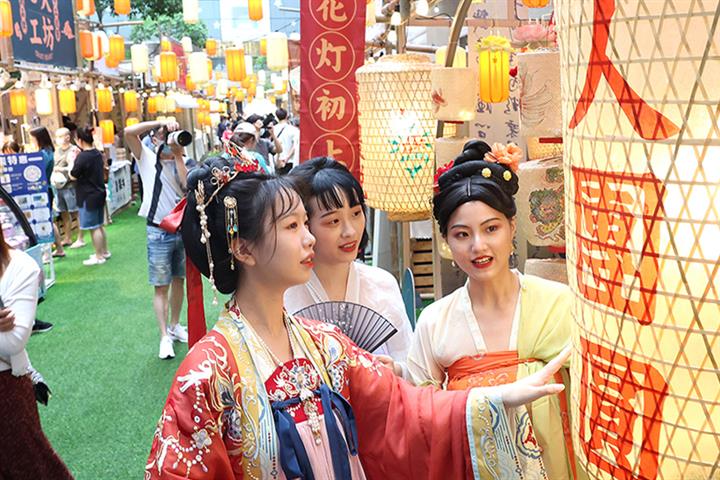 China’s Market for Han Dynasty-Style Clothing Is Worth USD1.4 Billion
China’s Market for Han Dynasty-Style Clothing Is Worth USD1.4 Billion(Yicai Global) Sept. 30 -- The Chinese market for new Hanfu clothing grew 6.4 percent to CNY10.1 billion (USD1.4 billion) last year from 2020, according to a white paper published this week.
‘New hanfu,’ as it is called, is a combination of traditional hanfu, a style of clothing worn by the Han ethnic majority that was popular before the Qing dynasty (1616-1912), with modern cosmetics, photography, clothing and accessories. New hanfu can be more widely worn, is closer to contemporary aesthetics in design, and is more innovative than its predecessor.
The 2022 White Paper on the Development of China’s New Hanfu Industry was published by new hanfu designer ShiSanYu in association with the China National Garment Association, Tmall Clothing, and iResearch Consulting Group.
Searches for ‘hanfu’ have exceeded those for ‘shirt’ on online marketplace Tmall since 2018, with hanfu buyers surging 92 percent. Hanfu for commuting has become one of the nine most-popular trending topics for autumn-winter fashion on Tmall this year, indicating that the style is becoming closer to people’s daily lives.
Competition, tight profit margins, an underdeveloped industrial chain, and intense pressure to secure more recognition and popularity are big issues in the industrialization of hanfu, according to experts.
The new hanfu industry is growing too fast, but is not yet mature, with quality especially variable, and so it is hard to raise the average price and gross profit, said Huang Haibo, a hanfu entrepreneur. Businesses have no money for research and development, and brick-and-mortar dealers have no pricing room, creating a vicious circle, he added.
Hanfu has extensive dermatoglyphic patterns which usually require hundreds of thousands of embroidery stitches, so new hanfu is also reshaping the embroidery supply chain, ShiSanYu founder Lu Yang said.
Investments have alleviated supply chain issues to some extent. Formed in 2006 and the first to open physical stores, Chonghuihantang Culture Communication announced in September 2020 that it had completed a strategic fundraiser worth tens of millions of Chinese yuan.
ShiSanYu completed a CNY100 million (USD14.1 million) A round of financing in April last year, while Poetic Oriental Beauty, which focuses on hanfu photography, has wrapped up four rounds.
China has 3,500 hanfu-related companies, and more than 1,000 of them were registered in 2019, per data from corporate information platform Tianyancha.
Hanfu account for just 0.8 percent of China’s entire apparel market, but is expected to grow to more than CNY100 billion in the long run, making up around 5 percent, according to calculations based on iResearch statistics.
Efforts must be made to promote new hanfu that conforms to contemporary aesthetic standards and can be worn in diversified scenarios known, recognized, and accepted by more people, Lu said. There is also a need to formulate professional standards for the industry, he added.
Editors: Shi Yi, Peter Thomas